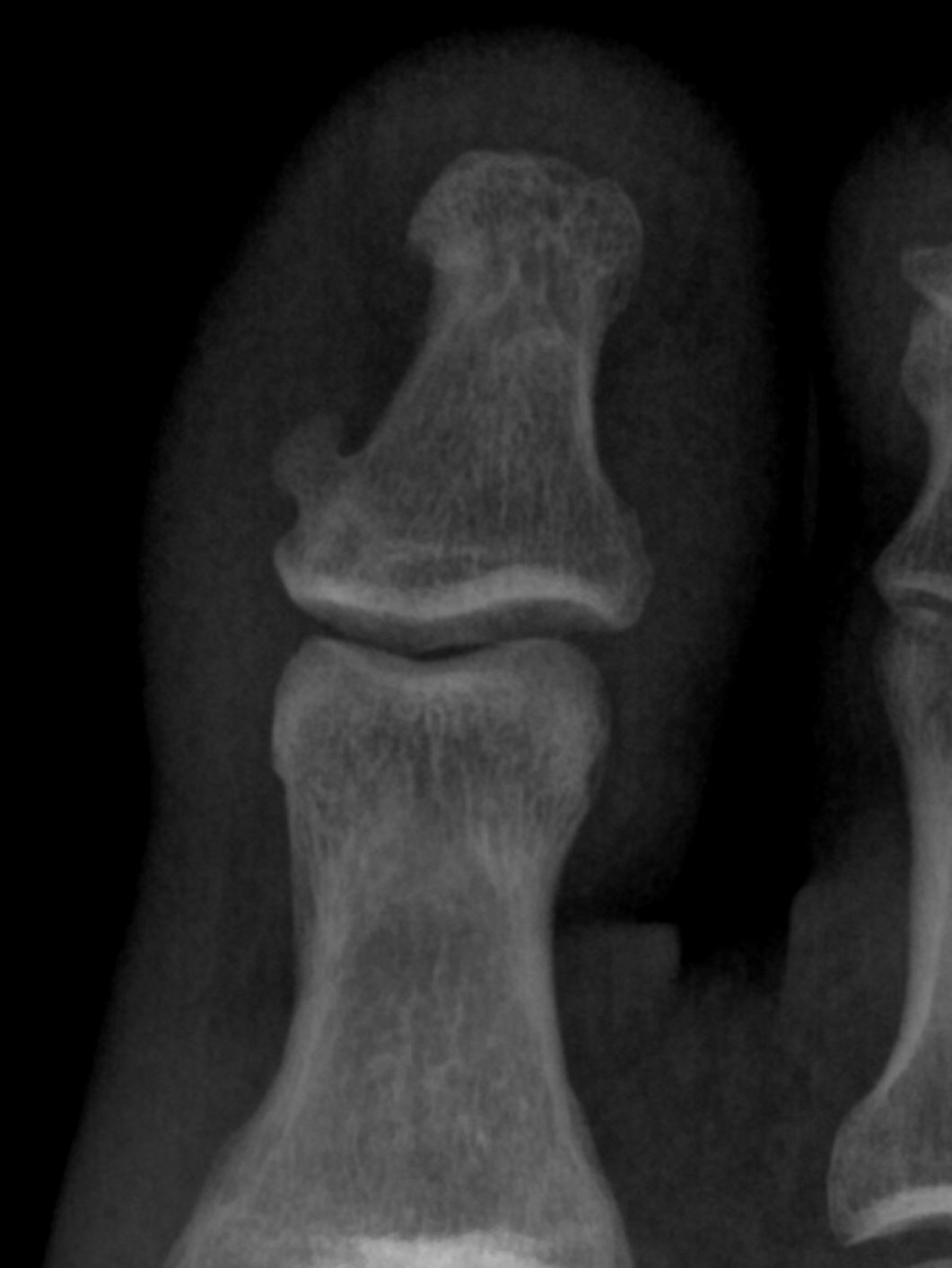The Common Vein
Copyright 2010
Definition
The phalanges of the forefoot are characterized by being 14 total bones.
They are part of the bones of the foot. They consist of bone and cartilage.
The unique structural feature is that each phalanx is made up of two to three bones. The first phalanx is made up of proximal and distal bones. The second through fifth phalanges are made up of proximal, middle, and distal bones. Each phalanx has a base, shaft, and head.
The bones of the 1st phalanx are short, broad, and strong. The proximal 1st phalanx articulates with the 1st metatarsal and the distal 1st phalanx.
The proximal 2nd phalanx articulates with the 2nd metatarsal and the middle 2nd phalanx. The middle 2nd phalanx articulates with the distal and proximal 2nd phalanx. The distal 2nd phalanx articulates with the middle 2nd phalanx.
The proximal 3rd phalanx articulates with the 3rd metatarsal and the middle 3rd phalanx. The middle 3rd phalanx articulates with the distal and proximal 3rd phalanx. The distal 3rd phalanx articulates with the middle 3rd phalanx.
The proximal 4th phalanx articulates with the 4th metatarsal and the middle 4th phalanx. The middle 4th phalanx articulates with the distal and proximal 4th phalanx. The distal 4th phalanx articulates with the middle 4th phalanx.
The 5th phalanx may be fused between the middle and distal phalanges in the elderly. The proximal 5th phalanx articulates with the 5th metatarsal and the middle 5th phalanx. The middle 5th phalanx articulates with the distal and proximal 5th phalanx. The distal 5th phalanx articulates with the middle 5th phalanx.
The phalanges all have secondary ossification centers at the bases that appear during the 3rd or 4th year proximally and the 6th and 7th year distally. The phalanges as well as all other bones, muscles, and ligaments of the body are derived of mesodermal origin in embryo.
The function of the phalanges is to assist with gait by increasing the weight bearing area of the foot and improving leverage.
Common diseases include arthritis, fracture, tumor, turf toe, Hallus Rigidus, Hallux Valgus/Bunion, hammertoes, clawtoes, amniotic band syndrome, mallet toe, and osteomyelitis.
Arthritis can occur as a result of aging and use (osteoarthritis), rheumatoid arthritis, or as a result of post-traumatic changes.
Turf toe is a sprain of the 1st metatarsophalangeal joint due to a hyperextension injury resulting in stretching the plantar capsule and plate.
Hallux Rigidus refers to arthritis of the 1st metatarsophalangeal joint resuling in pain and stiffening of the joint.
Hallux Valgus or a bunion refers to a deformity of the 1st metatarsophalangeal joint resulting in lateral deviation of the proximal phalanx and medial pressure on the 1st metatarsal head.
Mallet toe refers to a flexion deformity of the distal interphalangeal joint with pain.
A hammer toe deformity refers to a plantar flexon deformity of the proximal interphalangeal joint.
A clawtoe deformity refers to deformity of the metatarsophalangeal and interphalangeal joints. It can be associated with a neuromuscular disorder. It usually involves all the lesser toes (2 through 5).
Amniotic band syndrome occurs when amniotic bands/tissue in utero traps developing parts of a fetus. Toes can be amputated or deformed by this process.
Polydactyly refers to the presence of more than 5 toes on a foot. Brachydactyly is the term for short digits. Arachnodactyly refers to excessively long digits. Syndactyly is the term for when there is fusion of digits together. Acrosyndactyly occurs when there is a webbing of tissue that joins more than 1 finger together.
An overlapping 5th toe is usually bilateral and familial. It occurs when there is shortening/contracture of the extensor digitorum longus tendon
Osteomyelitis is an infection of the bone typically due to bacteria.
Commonly used diagnostic procedures include clinical history, physical exam, plain radiographs, CT scan, bone scan, and MRI.
It is usually treated with either non-operative methods or operative methods. Fractures can be treated non-operatively or operatively. Arthritis, hallux valgus/bunion, and hallux rigidus can be treated with surgery, physical therapy, or NSAIDs. Tumors can be treated with chemotherapy, radiation, and/or surgery depending upon the type. Osteomyelitis is treated with surgery and antibiotics. Tuft toe is treated with reducing activities and an orthotic device. A mallet toe can be treated nonoperatively with a shoe or surgically. Hammer toes are treated nonoperatively with proper footwear and toe sleeves or with surgery. Polydactyly can be treated with surgical removal of any extra toes or tissue.
Diseases

Ashley Davidoff TheCommonVein.net
References
Elstrom J, Virkus W, Pankovich (eds), Handbook of Fractures (3rd edition), McGraw Hill, New York, NY, 2006.
Koval K, Zuckerman J (eds), Handbook of Fractures (3rd edition), Lippincott Williams & Wilkins, Philadelphia, PA, 2006.
Lieberman J (ed), AAOS Comprehensive Orthopaedic Review, American Academy of Orthopaedic Surgeons, 2008.
Moore K, Dalley A (eds), Clinically Oriented Anatomy (5th edition), Lippincott Williams & Wilkins, Philadelphia, PA, 2006.
Wheeless? Textbook of Orthopaedics: Phalangeal Fractures (http://www.wheelessonline.com/ortho/phalangeal_fractures)
